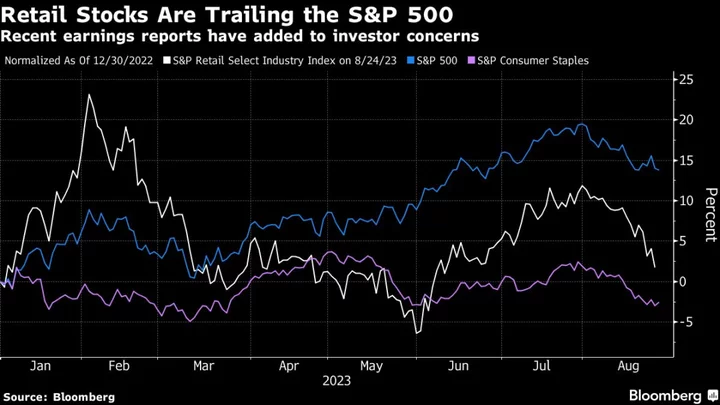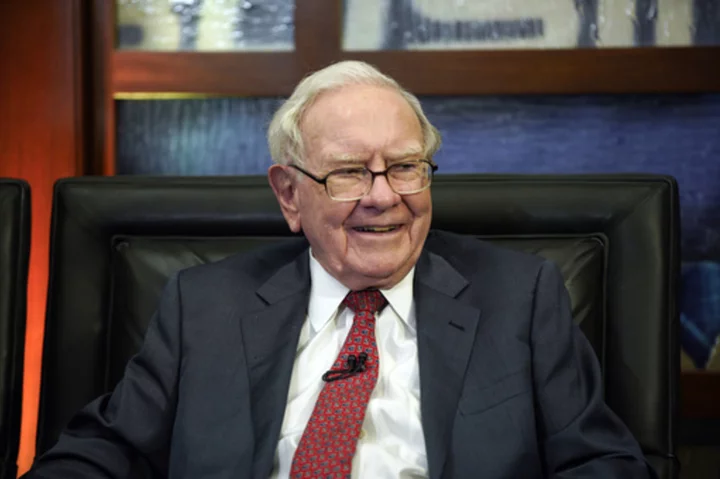US consumers, trapped in a web of conflicting signals on the health of the economy and how it impacts their ability to shop, might be forced to spend less enthusiastically on a key bucket of discretionary spending -- Christmas gifts, according to early forecasts of this year's holiday sales.
Even though it's still August, eyes are already on how the upcoming holiday shopping season will pan out.
The year-end months of November and December typically are dominated by shoppers scouring stores for deals and discounts on gift purchases. The winter months combined are a good barometer of the spending prowess of the consumer, and are critical for retailers, too, accounting for as much as a fifth of their annual sales.
As retailers prepare for the all-important fourth quarter that can make them profitable for an entire year, one estimate is saying that retailers won't have blowout holiday sales this year but are still expected to see sales up from last year.
"We are cautiously optimistic about the holiday season," said John Harmon, senior retail/technology analyst with Coresight Research, a retail research and advisory firm.
Coresight expects the 2023 year-end holiday sales for October through December to be up by just low single digits from a year ago.
Holiday sales in 2022 rose 5.3% for November and December combined over the prior period, according to the National Retail Federation, the industry's largest trade group.
But that doesn't mean that this year is expected to be historically bad, more that the US is coming off of a few years of anomalous economics.
Harmon said this year's forecast rests on the shoulders of "a couple of good years of strong holiday sales growth, making comparisons more difficult, and takes into account holiday spending is occurring sooner."
"The patterns of holiday spending have changed. It doesn't all happen all in the fourth quarter these days," he said, alluding to a "smearing effect" that occurred in 2021 when retailers like Amazon and Walmart afraid of tepid consumer demand because of the pandemic, initiated holiday sales as early as October. The same pattern was repeated last year, effectively elongating the holiday sales season.
Home Depot, for instance, said it has already started rolling out holiday-themed merchandise online last week. The home improvement retailer said in an email to CNN that it replicated the pattern it has used in recent years to move up sales of festive items, like a giant Santa Claus yard decoration and a six-foot animated singing and dancing Grinch, after noticing early customer demand for holiday products.
At the same time, Harmon said US retail sales are slowing. "There are pluses and minuses for the consumer," he said.
For instance, while hourly wages are up year-over-year for US consumers and the employment rate remains low, any benefits households may be gaining are being still counteracted by a variety of factors. There's persistent, but easing, inflation on categories such as groceries, gas and housing, interest-rate hikes, a slowing housing market and student loan repayments resuming, according to Coresight.
The "savings rate has gone down and it's a concern that consumer debt levels have gone up," said Harmon.
Americans' credit card debt levels hit a milestone recently, as well: For the first time ever, they've surpassed $1 trillion, according to recent data from the Federal Reserve Bank of New York.
Despite the numerous overhangs, Harmon said shoppers are still showing resilience. They've continue to shop for both necessities and discretionary products and services. "So far consumers really seem to have the desire, will and ability to keep spending," he said. "Barring any cataclysmic event, things seem to be moving in that direction and we don't foresee a huge risk to holiday spending."
Back-to-school shopping sales trends this year appear to reflect this sentiment. According to a recent S&P Global Market Intelligence report, sales of school-related merchandise this year are expected to increase by 1.5% (adjusted for inflation) as the rate of inflation on back-to-school retail sales cooled dramatically from 5.9% last year to just 0.3% this year. The report also cited rising incomes as helping to spur continued spending.
Marshal Cohen, chief retail analyst with market research firm Circana, said he also anticipates shoppers will spend on gifts, but in a pared-back way.
"The good news is there will be pent up demand on the gifting side of the equation," said Cohen. "Spending on essentials, and a lot less on discretionary products, means we have a lot of catching up to do by holiday time and a long list of desires to share with those giving gifts."
Cohen said the 2023 holiday shopping period could mirror 2022, "with a small early start in late October, a lackluster Cyber Monday and an OK Black Friday, and a long delay after until the last two weeks leading up to holiday."
"Consumers are in no rush to spend, and a lack of inspiration with so few new and exciting items makes for a ho-hum holiday at retail," he said.









